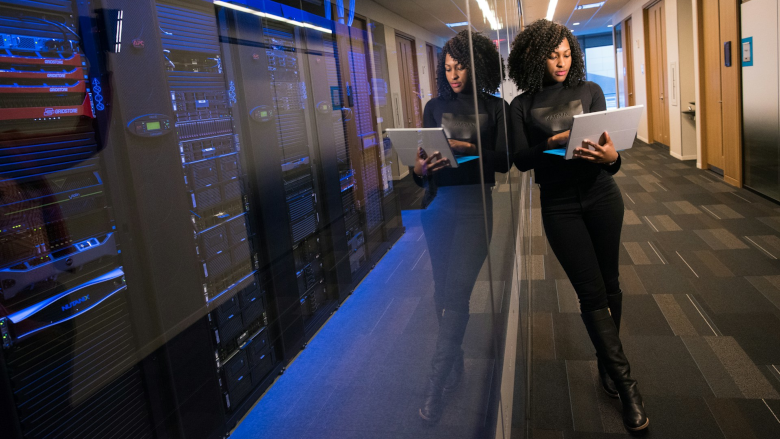- US Offers $10 Million Reward for Tips About State-Linked RedLine Cybercriminals
- You can get an iPhone 16 for free with this Boost Mobile deal - no trade-in required
- IRS open-sources Direct File tax software amid political and industry pushback - here's why
- Tata Communications recognised as a Leader in the 2025 Gartner® Magic Quadrant™ for Global WAN Services for 12 consecutive years
- Conducting Background Checks in the Corporate Security Environment
Breaking down DE&I barriers: Practical tips for security leaders

March is Women’s History Month — an important time to acknowledge the women who are paving the way for innovation within organizations across all industries, specifically within science, technology engineering and math (STEM) fields such as cybersecurity, computer sciences and beyond. The crossroads of diversity, equity and inclusion (DE&I) and cybersecurity is a powerful reminder that diversity is at the heart of innovation. The more varied the experiences and thinking of employees, the better the outcomes for the business overall.
However, the cybersecurity skills gap widened by nearly 75% over the past year, and Gartner forecasts that by 2025, a lack of talent will be responsible for more than half of all significant cyberattacks. It has never been more critical to double down on diversity in tech to increase innovation and business success through varied strengths and experiences. By implementing a holistic DE&I strategy that is interwoven throughout the organization — including but not limited to, policies, processes, goals and metrics, learning and development and more — leaders can increase diversity in the cybersecurity field and beyond. Prioritizing a holistic approach to DE&I will not only better employee morale but the overall credibility of the organization both internally and externally. By embedding policies and processes into the organizational foundation, businesses model their commitment to, and expectation of, a diverse and inclusive workplace.
Women empowering women
Despite the continued focus and push for DE&I initiatives in tech and public commitments from tech companies to do better, great uncertainty still exists among leaders on the best ways to achieve real progress. Cyber leaders and their organizations should be investing in mutually beneficial mentorship programs to help female innovators succeed. It’s imperative that employees surround themselves with influential leaders who they admire in the field — of all genders and other diverse dimensions of difference — and proactively build relationships both inside and outside of their team and lines of business. Actively taking the time to learn how best to navigate the organization will help their career trajectory tenfold.
Additionally, women in the industry should give back to other women in the business as their own career advances. Recognize and support developing inclusive leadership competencies and extend resources to those practicing inclusive behaviors, such as employee resource group (ERG) leadership, leaders of inclusive/belonging conversations and beyond.
The impact of community
Companies that address social issues will continue to increase as they begin to realize the significance ESG and DEI has on corporate reputation and ability to attract and retain customers and employees. Individuals can inspire a more inclusive workplace through modeling and regular, ongoing demonstrations of inclusivity. Ensure that each team member is heard and take steps that enable them to “speak up” in ways that work best for them. Keep in mind diverse points of view, understanding that each team member is coming to the table with a different perspective and experience. Make sure to give — and share — credit for the individual and/or team’s success. The multiplier effect is real, and it is mission critical to take the opportunities to build cohesion among a team. Through these ongoing interactions, businesses will ultimately shift their culture to one that people want to be part of for the long run.
Be an advocate for all dimensions of identity
It’s important that cyber leaders and their organizations actively advocate for employees of all dimensions of identity. This can be done by thinking through a broader lens that includes all genders, races, ethnicities, sexual orientation, ages or generations, experiences, backgrounds, languages, geographies, etc. Employers can inspire a more inclusive workplace by visibly committing to DE&I practices and making them a priority within the business, including regular learning and development opportunities, not only for leaders and individual contributors, but also middle managers.
Diversity is about getting the mix of people with different backgrounds and experiences in the door, while inclusion is about ensuring that “the mix” is working well together. Successful inclusion ultimately makes one feel like they belong — where they feel welcomed and safe, respected, accepted and heard by those around them. This is a model that business leaders should strive to achieve.
The time is now for senior leadership to champion DE&I efforts, noting that executive support is essential for creating a culture where DE&I and gender inclusivity is not just an initiative or program but a core value of the organization. Employees at any level can contribute to the change they wish to see in their organization through simple everyday actions — expanding their networks by joining an ERG or participating in events, committing to ongoing learning and by modeling an inclusive culture that attracts and supports all talent, including diverse talent.

